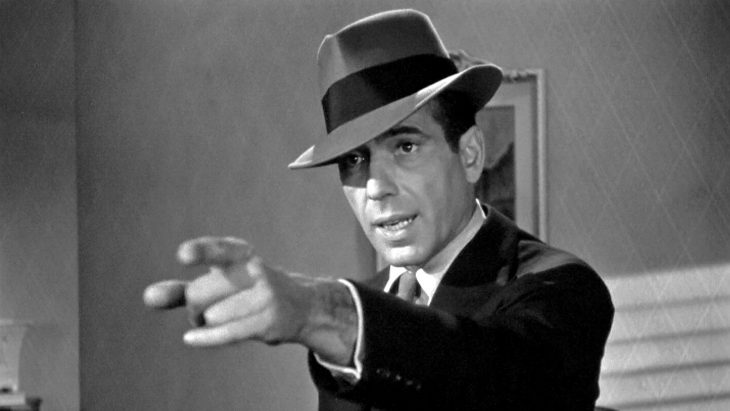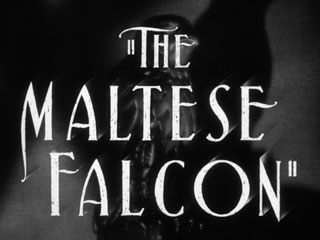
The Non-Noir Maltese Falcon
The film The Maltese Falcon was a film adaptation of the noir and mystery detective novel of the same name written by Dashiell Hammett. Directed by John Huston, the film stars Humphrey Bogart playing hard-boiled detective Samuel Spade who quickly finds himself involved in a couple of murder investigations and questionable characters in search of an artifact—a falcon statuette of immense wealth and treasure. This was perhaps the most surprising element of the story to me when I read the source novel—the literal Maltese falcon. Though it was nowhere near the surprise I experienced when I realized the 1941 adaptation was far from the noir novel I knew.

While the novel has space to allow its reader to guess at what the item Joel Cairo, Brigid O’Shaughnessy, and Gutman with Wilmer at his side are trying to obtain, the film opens with a crawl of text explaining what the falcon is and an unmistakable image of the falcon shown on the screen behind it. The reader does not truly know what the murders are about until Gutman tells Spade the origin story of the Maltese falcon, and a crucial part of the experience of reading the novel was the lack of a plot centered around the falcon. Yes, the falcon was important and gave reason to the events of the story, but there are more tension and mystery in the novel to relish. A man, albeit a detective, is shot and killed after just having been introduced, and while this still happens in the film, the introduction including the falcon takes some of the mystery and bluntness out of the equation. The audience is reprieved of some of the harshnesses of the fictional world of The Maltese Falcon as they know there is a valuable artifact floating around. The focus is redirected to the falcon and figuring out how it fits into the story rather than the mystery of Samuel Spade and figuring out why he does what he does and what his intentions are.
Therefore, when classifying the film into a genre, it could hardly be classified as a noir as its novel source material is. Perhaps the strongest case against the film as a noir was the ending—the film ends with Spade turning Brigid over to the police because he won’t take the fall for her, having solved the mystery and caught the bad guys (and gal). Notably, Hammett does not end his novel with this scene; Hammett continues to describe that Spade goes into his office that following Monday morning. Effie Perine is there, and she is frustrated with Spade for betraying Brigid. After they talk about this, Effie tells Spade that Iva Archer is there to see him, and he tells Effie to send her into his office.
Other than the ambiguity of the falcon and Spade’s actions throughout the novel, this scene makes the novel a noir because it emphasizes that at the end of the day, even though Spade came out on top as the good detective who found the truth behind the murders, he is inherently imperfect, immoral, and gritty—his life is messy, and it doesn’t line up with how Effie wants him to be. This presents one of two unavoidable truths—either Spade isn’t willing to play the fool for Brigid but is for Iva and maybe even loved her despite her marriage to his partner, or that he is simply toying with her emotions and taking advantage of her as a woman. The cynicism of this idea in the novel shows that Spade goes back to his same old problems with the same old attitude.
Of course, Huston’s film adaptation was released at a time when America was still coming out of the Great Depression and had a newly enforced film production code, so, understandably, people going to films wanted the feel-good ending that they got at the end of The Maltese Falcon. Personally, though, I would have enjoyed a true noir film adaptation of the novel instead of the 1941 mystery/drama.